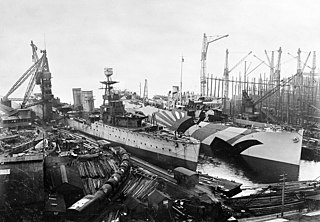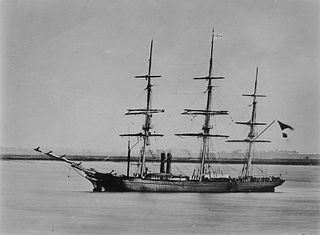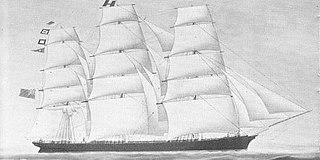
A clipper was a type of mid-19th-century merchant sailing vessel, designed for speed. Clippers were generally narrow for their length, small by later 19th century standards, could carry limited bulk freight, and had a large total sail area. "Clipper" does not refer to a specific sailplan; clippers. by sailplan, may be schooners, brigs, brigantines, etc., or indeed "ships" as restrictively defined in the Age of Sail. Clipper ships were mostly constructed in British and American shipyards, though France, Brazil, the Netherlands and other nations also produced some. Clippers sailed all over the world, primarily on the trade routes between the United Kingdom and China, in transatlantic trade, and on the New York-to-San Francisco route around Cape Horn during the California Gold Rush. Dutch clippers were built beginning in the 1850s for the tea trade and passenger service to Java.

Cutty Sark is a British clipper ship. Built on the River Leven, Dumbarton, Scotland in 1869 for the Jock Willis Shipping Line, she was one of the last tea clippers to be built and one of the fastest, coming at the end of a long period of design development, which halted as sailing ships gave way to steam propulsion.

Ariel was a clipper ship famous for making fast voyages between China and England in the late 1860s. She is most famous for almost winning The Great Tea Race of 1866, an unofficial race between Foochow, China and London with the first tea crop of the 1866 season.

Blackadder was a clipper ship, a sister ship to Hallowe'en, built in 1870 by Maudslay, Sons & Field at Greenwich for Jock Willis & Sons.

Taitsing was a famous British tea clipper.

Sir Lancelot was a clipper ship which sailed in the China trade and the India-Mauritius trade.

Scotts Shipbuilding and Engineering Company Limited, often referred to simply as Scotts, was a Scottish shipbuilding company based in Greenock on the River Clyde. In its time in Greenock, Scotts built over 1,250 ships.
Alexander Stephen and Sons Limited, often referred to simply as Alex Stephens or just Stephens, was a Scottish shipbuilding company based in Linthouse, Glasgow, on the River Clyde.

The Taeping was a clipper ship built in 1863 by Robert Steele & Company of Greenock and owned by Captain Alexander Rodger of Cellardyke, Fife. Taeping participated in The Great Tea Race of 1866 and narrowly defeated the Ariel. The ship's captain was Donald MacKinnon of Heanish, Tiree. It was wrecked on 22 September 1871 by Ladd's Reef in the South China Sea while traveling to New York.

In the middle third of the 19th Century, the clippers which carried cargoes of tea from China to Britain would compete in informal races to be first ship to dock in London with the new crop of each season. The Great Tea Race of 1866 was keenly followed in the press, with an extremely close finish. Taeping docked 28 minutes before Ariel - after a passage of more than 14,000 miles. Ariel had been ahead when the ships were taken in tow by steam tugs off Deal, but after waiting for the tide at Gravesend the deciding factor was the height of tide at which one could enter the different docks used by each ship. The third finisher, Serica, docked an hour and 15 minutes after Ariel. These three ships had left China on the same tide and arrived at London 99 days later to dock on the same tide. The next to arrive, 28 hours later, was Fiery Cross, followed, the next day, by Taitsing.
The Serica was a clipper ship built in 1863 by Robert Steele & Co., at Greenock on the south bank of the Clyde, Scotland, for James Findlay.
Alexander Hall and Sons was a shipbuilder that operated in Aberdeen from 1797 to 1957.

Lahloo was a British tea clipper known for winning the Tea Race of 1870, and finishing second in the Tea Race of 1871. She sailed from Foochow to London with over a million pounds of tea in 1868.

Lord of the Isles was the first iron-hulled tea clipper, built in Greenock in 1853. She served in the tea trade until 1862, and also made voyages to Australia. She is known for a record passage between Greenock and Shanghai, and for her close finish in the 1856 Tea Race from China to England, docking in London just ten minutes before Maury. This race was the basis for the plot of a 1927 movie by Cecil B. DeMille The Yankee Clipper.
William Scott Shipbuilders was a short lived shipbuilder in Bristol, England in the 19th century and an early producer of steamships. The yard was important in the development of Bristol Shipbuilding with Scott's assistant, William Patterson, going on to produce the SS Great Britain.

Windhover was a British tea clipper built in the closing years of construction of this sort of ship. She measured 847 tons NRT. Like the majority of the tea clippers built in the second half of the 1860s, she was of composite construction. She was built by Connell and Co, Glasgow, Scotland in 1868.

SS Agamemnon was one of the first successful long-distance merchant steamships. She was built in 1865 to trade between Britain and China, and competed with tea clippers before and after the opening of the Suez Canal in 1869. She brought together three improvements in steamship design: higher boiler pressure, an efficient and compact compound steam engine, and a hull form with modest power requirements.

Kaisow, a composite clipper, was built by Robert Steele & Company at Greenock and launched on 19 November 1868.

Wylo a composite clipper was built by Robert Steele & Company, Greenock, and launched on 15 April 1869. Robert Steele & Company also built the famous clippers Ariel and Taeping who took part in the great tea race of 1866, and Sir Lancelot another renown clipper ship.

Osaka, A composite barque, built by William Pile, Sunderland, at Yard No. 179 for Killick Martin & Company, the company founded by Captain James Killick and launched on 12 July 1869. William Pile also built Osaka's sister ship Miako, for Killick Martin & Company launched on 15 April 1869.



















